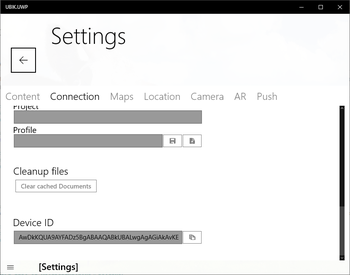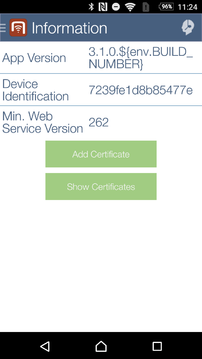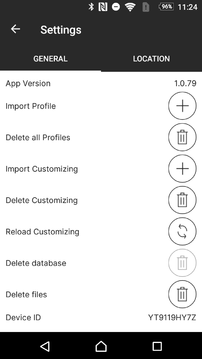The Device ID is a unique identifier of the device, which is fetched from the OS and used to uniquely identify devices restricting access to them. The type of ID and its origin vary by platform. The Device ID is also sent to the Ubik Web Service.
Access Device ID
Accessing the Device ID is designed to be simple.
Android
On the legacy Android client, the Device ID can be found on the Information page.
UWP
On the Windows client, the Device ID can be accessed on the Connection Settings page.
Xamarin
On the newer Xamarin clients (iOS and Android), the Device ID can be inspected on the General Settings page.
Technical Information
The Device ID should be unique enough to exclusively identify a device/client and shouldn't get lost if the app updates.
Windows
In the UWP/WinX client, the device id is created using the ASHWID identifier encoded to a Base64 string.
Android
On the native Android client, the ANDROID_ID (SSAID) is accessed. Before Android 8, this ID was bound to a device for its lifetime. Since Android 8, the ID is different for every user (if the device has the multi-user feature enabled) and when the app is reinstalled.
On the Android Xamarin app, depending on the version, the Build.SERIAL is accessed (below Android 8), and Build.getSerial starting with Android 8, also requiring the READ_PHONE_STATE permission. With Android 10, the function only works for devices enrolled in an organization.
iOS
On iOS, the application makes use of the identifierForVendor. This is a GUID uniquely identifying a device to an app vendor.


